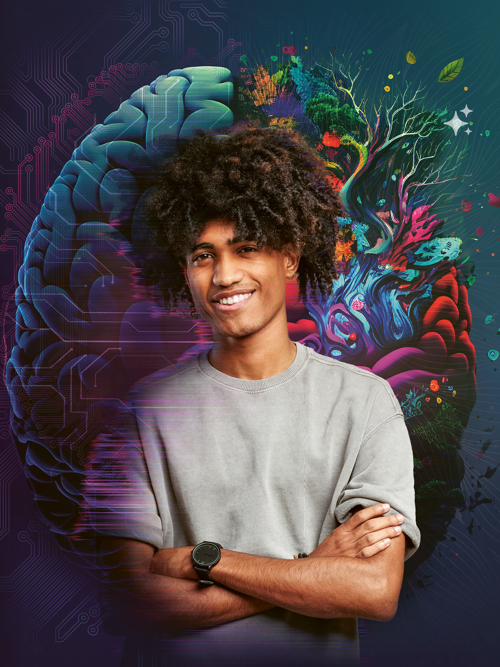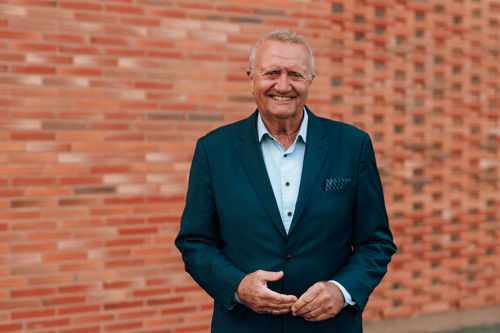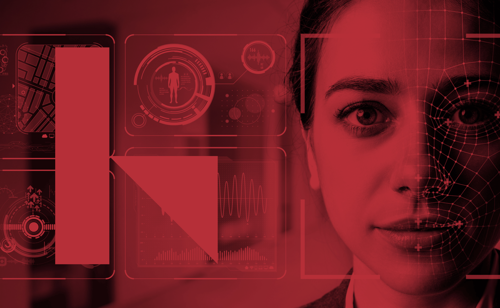Can this AI model transform heart disease diagnosis?
-
Sist oppdatert
21. oktober 2025
-
Kategori
Despite affecting 74 million people, heart valve disease is still diagnosed by hand — one scan at a time. A new AI could change that.
SCIENCE NEWS FROM KRISTIANIA: Artificial Intelligence
Summary:
- Associate Professor at Kristiania University of Applied Sciences, Gabriel Balaban and his team have developed DeepValve, the first AI designed to automatically detect the heart’s mitral valve in MRI scans.
- By pinpointing a valve thinner than a pencil line, the AI could help doctors diagnose heart disease faster and with greater accuracy.
- Still in early stages, DeepValve could pave the way for AI-assisted heart care and open new research opportunities on heart valve conditions.
(This summary was created by AI and reviewed by the editors).
As Europe’s population ages, the workload of diagnosing heart valve diseases is only growing, while the number of specialists is shrinking. What if artificial intelligence (AI) could automate the process of identifying heart valves in medical images, making it faster and more precise?
Our new study introduces DeepValve, the first AI-powered pipeline designed to automatically detect the important heart valve, called the mitral valve.
Why the mitral valve matters
The mitral valve acts like a doorway between two of the heart’s rooms, the upper left chamber (the atrium) and the lower left chamber (the ventricle). Sometimes this doorway does not close all the way, such as in the condition mitral valve prolapse, where the valve bulges backward. When that happens, blood can leak the wrong way, making the heart work harder and pump less efficiently. In the long run, the complications can be severe, including heart failure and sudden cardiac death.
Spotting problems with the mitral valve early is crucial, but today’s tools, such as heart ultrasound, aren’t perfect. They depend heavily on the skill of the person using them, and the images can sometimes be difficult to interpret. That’s where magnetic resonance imaging (MRI) comes in.
MRI is a powerful scanner that uses magnets and radio waves to take detailed, 3D pictures of the inside of the body. It can give incredibly clear views of the heart, but the mitral valve often appears as just a thin, hard-to-spot line.
Reading those scans takes real expertise. DeepValve steps in to help: it uses a form of AI called deep learning to analyze the images and pinpoint the mitral valve with impressive accuracy.
The challenge of developing DeepValve
Developing DeepValve wasn’t easy. We needed a way to automatically analyze MRI scans and pinpoint the mitral valve, a task far trickier than it sounds. MRI images can vary greatly depending on the angle of the scan and the patient’s condition.
Some scans require the patient to hold their breath for 30 seconds or more, which can be challenging for the sickest patients. Even small movements can blur the images, making it difficult to distinguish the thin mitral valve from background noise.
How we created DeepValve
1. UNET-REG acted like a GPS for the heart, trying to pinpoint the exact spots that mark the valve.
2. UNET-SEG took a painter’s approach, coloring every pixel that belonged to the valve to create a clear outline of its shape.
3. DSNT-REG combined the best of both worlds, using heatmaps to “sense” the valve and then zooming in to identify precise coordinates.
Each AI model was trained on 120 MRI scans from patients with a condition called mitral annular disjunction, where the valve attaches to an abnormal part of the heart wall. Many of the patients also had mitral valve prolapse, which contributed to the medical relevance of the dataset.
Among the three models, DSNT-REG emerged as the standout, consistently locating the valve’s key landmarks with a median error of just 6.5 millimeters, roughly the width of a pencil eraser. Even in the trickiest scans, it could reliably distinguish the paper-thin valve from surrounding noise.
Meanwhile, UNET-SEG also showed promise, accurately outlining valve structures even when images were noisy or distorted. Together, these results demonstrated that AI could tackle the kind of variability and imperfections that make manual analysis so slow and difficult, paving the way for faster, more consistent detection of heart valve problems.

Les Kunnskap Kristianias temautgave:
The future of cardiac care
DeepValve is still in its early stages and requires further validation. But it represents an important step toward AI-assisted heart imaging. Next, researchers aim to expand the dataset, improve motion tracking across heartbeats, and test clinical applications.
The system also opens up new research opportunities. While mitral valve prolapse has been studied extensively, far less is known about the mitral annual disjunction. Researchers are still debating whether this condition is harmful on its own. By automatically locating the mitral valve in large MRI datasets, DeepValve makes it possible to study this condition more efficiently, and ultimately, improve patient care.
About the research collaboration:
References:
Monopoli, G., et al. (2025) DeepValve: The first automatic detection pipeline for the mitral valve in Cardiac Magnetic Resonance imaging, Computers in Biology and Medicine, 192A.
Text: Gabriel Balaban, Associate Professor, School of Economics, Innovation and Technology, Kristiania University of Applied Sciences, Giulia Monopoli, PhD candidate, Simula Research Laboratory, and Molly Maleckar, Research Professor, Simula Research Laboratory.
We love hearing from you!
Send your comments and questions regarding this article by e-mail to kunnskap@kristiania.no.
Siste nytt fra Kunnskap Kristiania
 Kunnskap KristianiaLes mer
Kunnskap KristianiaLes merHva er god utdanning?
I Kunnskap Kristianias nye temautgave har vi invitert forskere og undervisere til å reflektere rundt hvordan vi lærer, og hvordan god utdanning formes. Kunnskap KristianiaLes mer
Kunnskap KristianiaLes merFred for enhver pris?
Kjære Nobelkomité: Det finnes tider da dere ikke bare deler ut en pris, men skriver i verdens moralske grunnbok. Kunnskap KristianiaLes mer
Kunnskap KristianiaLes merShort exchange programmes provide meaningful learning experiences
By participating in an exchange programme, students develop skills such as critical thinking, empathy and intercultural understanding. Kunnskap KristianiaLes mer
Kunnskap KristianiaLes merBlack Friday: kjøpefest eller klimaskam?
Adventstiden handler ikke bare om lys og forventning. Den handler like mye om handelens egen høytidsdag.








